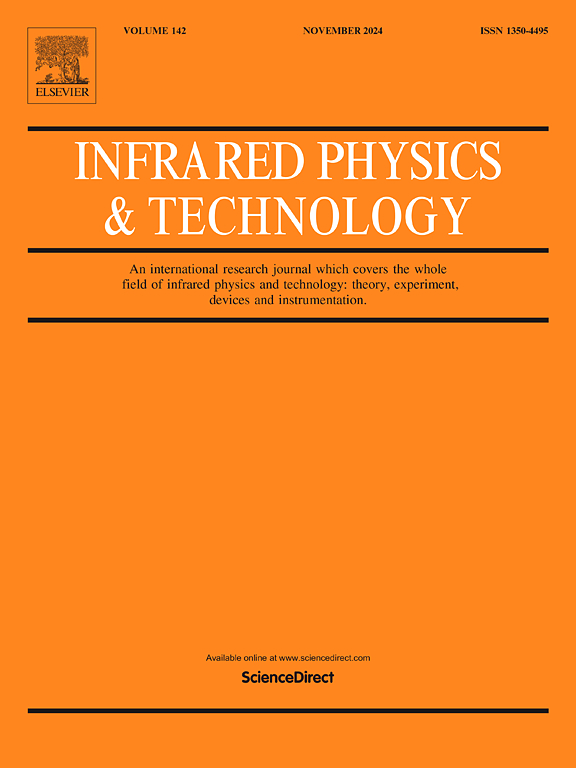DHTSD: On discrete Hankel transform spectral description for effective infrared spectra recovery and identification
IF 3.1
3区 物理与天体物理
Q2 INSTRUMENTS & INSTRUMENTATION
引用次数: 0
Abstract
Infrared spectroscopy has shown promise in the field of biomedicine practice. Nevertheless, its widespread application, particularly in the imaging field, has been hampered by the slow acquisition of spectral data from degraded infrared signals, which is exacerbated by band overlap and random noise. This study presents a novel infrared spectral recovery technique that utilizes discrete Hankel transform regularization and is capable of distinguishing between degraded and high-resolution infrared spectra. To assess the sparse disparity between the captured infrared spectrum and its ground truth counterpart in the frequency domain, we use the discrete Hankel transform to examine their coefficient distributions. Given that the distribution of the ground truth spectrum is significantly sparser than that detected, we propose an infrared spectral recovery framework that regulates the sparsity of the observed spectrum using the L0 norm. Then, the tracking algorithm of greedy analysis is leveraged to address the challenge of L0 norm minimization. Experimental results, including both simulated and real spectral data, confirm the effectiveness of the algorithm in preserving the spectral peaks of the infrared while removing the random noise. Furthermore, our algorithm can determine the aperture function of spectrometer instrument and thus significantly increase the significance of the measurement.
求助全文
约1分钟内获得全文
求助全文
来源期刊
CiteScore
5.70
自引率
12.10%
发文量
400
审稿时长
67 days
期刊介绍:
The Journal covers the entire field of infrared physics and technology: theory, experiment, application, devices and instrumentation. Infrared'' is defined as covering the near, mid and far infrared (terahertz) regions from 0.75um (750nm) to 1mm (300GHz.) Submissions in the 300GHz to 100GHz region may be accepted at the editors discretion if their content is relevant to shorter wavelengths. Submissions must be primarily concerned with and directly relevant to this spectral region.
Its core topics can be summarized as the generation, propagation and detection, of infrared radiation; the associated optics, materials and devices; and its use in all fields of science, industry, engineering and medicine.
Infrared techniques occur in many different fields, notably spectroscopy and interferometry; material characterization and processing; atmospheric physics, astronomy and space research. Scientific aspects include lasers, quantum optics, quantum electronics, image processing and semiconductor physics. Some important applications are medical diagnostics and treatment, industrial inspection and environmental monitoring.

 求助内容:
求助内容: 应助结果提醒方式:
应助结果提醒方式:


